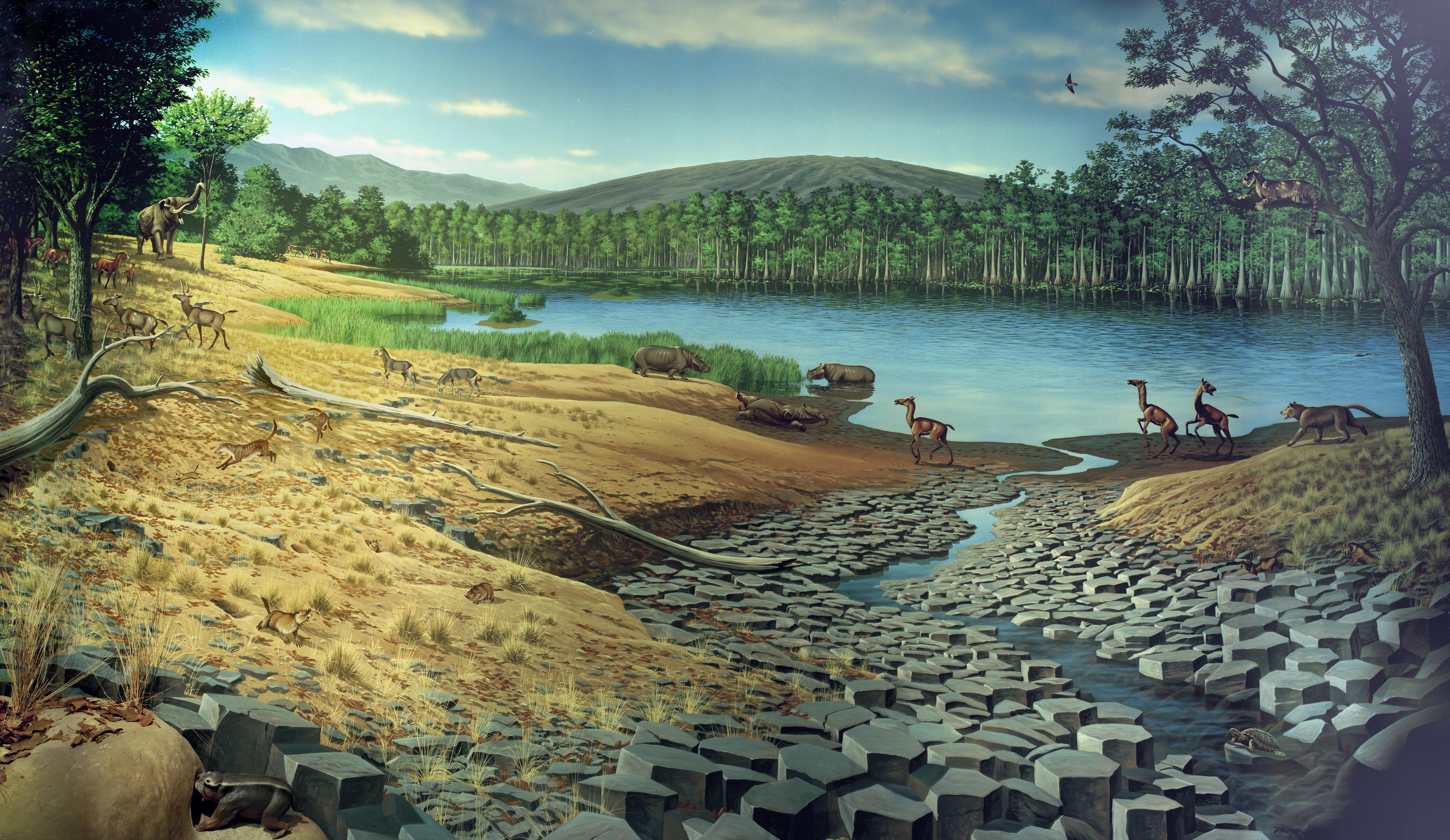|
Mylagaulidae
The Mylagaulidae or mylagaulids are an extinct clade of sciuromorph rodents nested within the family Aplodontiidae. They are known from the Neogene of North America and China. The oldest member is the Late Oligocene '' Trilaccogaulus montanensis'' that lived some 29 million years ago (Mya), and the youngest was '' Ceratogaulus hatcheri''—formerly in the invalid genus "''Epigaulus"'' —which was found barely into the Pliocene, some 5 Mya.Hopkins (2005) Systematics Three subfamilies are recognized. The taxonomy of '' Galbreathia'' is not resolved; it might belong in Mylagaulinae, but lacks the characteristic apomorphies. Promylagaulinae *Genus '' Crucimys'' *Genus '' Promylagaulus'' *Genus '' Trilaccogaulus'' *Genus '' Simpligaulus'' Mesogaulinae *Genus '' Mesogaulus'' - includes ''Mylagaulodon'' Mylagaulinae *Genus '' Alphagaulus'' (paraphyletic) *Genus '' Ceratogaulus'' - includes "''Epigaulus"'' *Genus '' Hesperogaulus'' *Genus '' Mylagaulus'' *Genus ''Notogaulus'' *Genus ... [...More Info...] [...Related Items...] OR: [Wikipedia] [Google] [Baidu] |
Ceratogaulus Hatcheri
Horned gophers are extinct rodents from the genus ''Ceratogaulus'', a member of the extinct fossorial rodent clade Mylagaulidae. ''Ceratogaulus'' is the only known rodent genus with horns, and is the smallest known horned mammal. ''Ceratogaulus'' lived from the late Miocene to the early Pliocene epochs, 16.3 to 5.3 million years ago. Description The horned gopher had two horns; these were large (in comparison to body size), paired, and originated from the nasal bones. Horned gophers are the smallest known horned mammals and the only known rodents ever to have had horns. They are also one of only two known horned fossorial mammals, the other being '' Peltephilus'', an extinct genus of armadillo. They were native to what is now the Great Plains of North America, mostly Nebraska. The role of the horns of ''Ceratogaulus'' is subject to much speculation. Several functions have been hypothesized (see below for a more detailed analysis) including digging, mating displays or combat, an ... [...More Info...] [...Related Items...] OR: [Wikipedia] [Google] [Baidu] |
Sciuromorpha
Sciuromorpha ( 'squirrel-like') is a rodent Order (biology), suborder that includes several rodent Family (biology), families. It includes all members of the Sciuridae (the squirrel family) as well as the mountain beaver species. Traditionally, the term has been defined on the basis of the shape of the infraorbital canal. A sciuromorphous zygomasseteric system is characterized by attachment of the lateral masseter muscle along the side of the snout, rostrum. Unlike hystricomorphous and myomorphous rodents, the medial masseter muscle does not pass through the infraorbital canal. Among extant rodents, only the families Sciuridae, Castoridae, Heteromyidae, and Geomyidae are truly sciuromorphous. Some authorities would exclude the Geomyidae and Heteromyidae from that list due to the attachment of the medial masseter directly behind the zygomatic arch. Carleton and Musser (2005) redefined the rodent suborders on Morphology (biology), morphological and Molecular phylogeny, molecu ... [...More Info...] [...Related Items...] OR: [Wikipedia] [Google] [Baidu] |
Rodent
Rodents (from Latin , 'to gnaw') are mammals of the Order (biology), order Rodentia ( ), which are characterized by a single pair of continuously growing incisors in each of the upper and Mandible, lower jaws. About 40% of all mammal species are rodents. They are native to all major land masses except for Antarctica, and several oceanic islands, though they have subsequently been introduced to most of these land masses by human activity. Rodents are extremely diverse in their ecology and lifestyles and can be found in almost every terrestrial habitat, including human-made environments. Species can be arboreal, fossorial (burrowing), saltatorial/ricochetal (leaping on their hind legs), or semiaquatic. However, all rodents share several morphological features, including having only a single upper and lower pair of ever-growing incisors. Well-known rodents include Mouse, mice, rats, squirrels, prairie dogs, porcupines, beavers, Cavia, guinea pigs, and hamsters. Once included wi ... [...More Info...] [...Related Items...] OR: [Wikipedia] [Google] [Baidu] |
Mylagaulus
''Mylagaulus'' is an extinct genus of rodents in the family Mylagaulidae. ''Mylagaulus'' lived in the Americas during the middle to late Miocene. The genus contains the following species: *''M. cambridgensis'' *''M. cornusaulax'' Czaplewski, 2012 – Miocene, Oklahoma (United States The United States of America (USA), also known as the United States (U.S.) or America, is a country primarily located in North America. It is a federal republic of 50 U.S. state, states and a federal capital district, Washington, D.C. The 48 ...) *''M. elassos'' *''M. kinseyi'' *''M. sesquipedalis'' References Sciuromorpha Fossil taxa described in 1878 Prehistoric rodent genera Extinct mammals of North America Taxa named by Edward Drinker Cope {{paleo-rodent-stub ... [...More Info...] [...Related Items...] OR: [Wikipedia] [Google] [Baidu] |
Late Oligocene
The Chattian is, in the geologic timescale The geologic time scale or geological time scale (GTS) is a representation of time based on the rock record of Earth. It is a system of chronological dating that uses chronostratigraphy (the process of relating strata to time) and geochron ..., the younger of two age (geology), ages or upper of two stage (stratigraphy), stages of the Oligocene epoch (geology), Epoch/Series (stratigraphy), Series. It spans the time between . The Chattian is preceded by the Rupelian and is followed by the Aquitanian (stage), Aquitanian (the lowest stage of the Miocene). Stratigraphic definition The Chattian was introduced by Austrian palaeontologist Theodor Fuchs in 1894. Fuchs named the stage after the Chatti, a Germanic peoples, Germanic tribe.Berry, Edward W"The Mayence Basin, a Chapter of Geologic History" ''The Scientific Monthly'', Vol. 16, No. 2, February 1923. pp. 114. Retrieved March 18, 2020. The original type locality (geology), type l ... [...More Info...] [...Related Items...] OR: [Wikipedia] [Google] [Baidu] |


